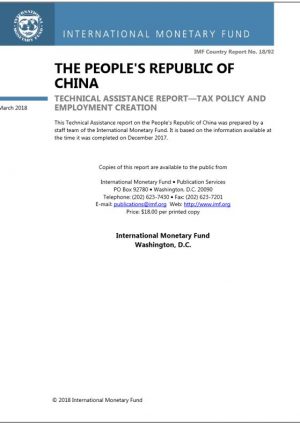IMF Technical Assistance Report to the People’s Republic of China: Tax Policy and Employment Creation
BCEC Director Alan Duncan was invited to be part of an International Monetary Fund (IMF) Expert Mission to the People’s Republic of China, to prepare a Technical Assistance Report on the impact of tax policy on employment in China. The report examines the potential for reform to the Chinese taxation and social security system as it applies to employed labor, and to small and medium-sized enterprises. Research findings and reform recommendations draw on economic theory, international experiences, and empirical evidence on tax, social security and self-employment policy in China. The Mission benefitted from detailed discussions with Chinese authorities and tax administration officials during a workshop in Yangzhou and meetings in Beijing.
Taxation of Labor
The personal income tax on wages is low, but the tax wedge, which includes social security contributions, is high and follows an unsteady pattern, rising, falling, and again rising.Given a relatively weak link between social contributions and related benefits, they can both be analytically combined to study the impact on labor markets. A large minimum contribution to social security implies an extremely high participation tax rate for low-paid workers taking up employment, or a strong incentive for hiring workers that will not participate in the social security system (e.g., rural migrant workers). The temporary drop in the marginal tax wedge is the result of an upper limit on social security contributions, which is not aligned with personal income tax thresholds.
The taxation of labor differs strongly by type and location of employment. The scheduler system of the personal income tax means that labor taxes differ depending on the category into which income falls. Wages and salaries, for example, face a progressive tax rate, rising from 3-45 percent, and a generous allowance, but the provision of professional services is taxed at a flat rate and with a lower allowance. Self-employed people and subcontractors also face progressive tax, but with a slightly different schedule. The tax wedge also differs by location, with rural workers paying much lower social security contributions on the same wage level, and some rate variation also across urban areas. Moreover, enforcement and administrative practices differ, leading to differences in effective tax wedges. In addition to tax and social security, many localities also require significant contributions to a housing fund, which represents an additional increase in labor costs for employers.




